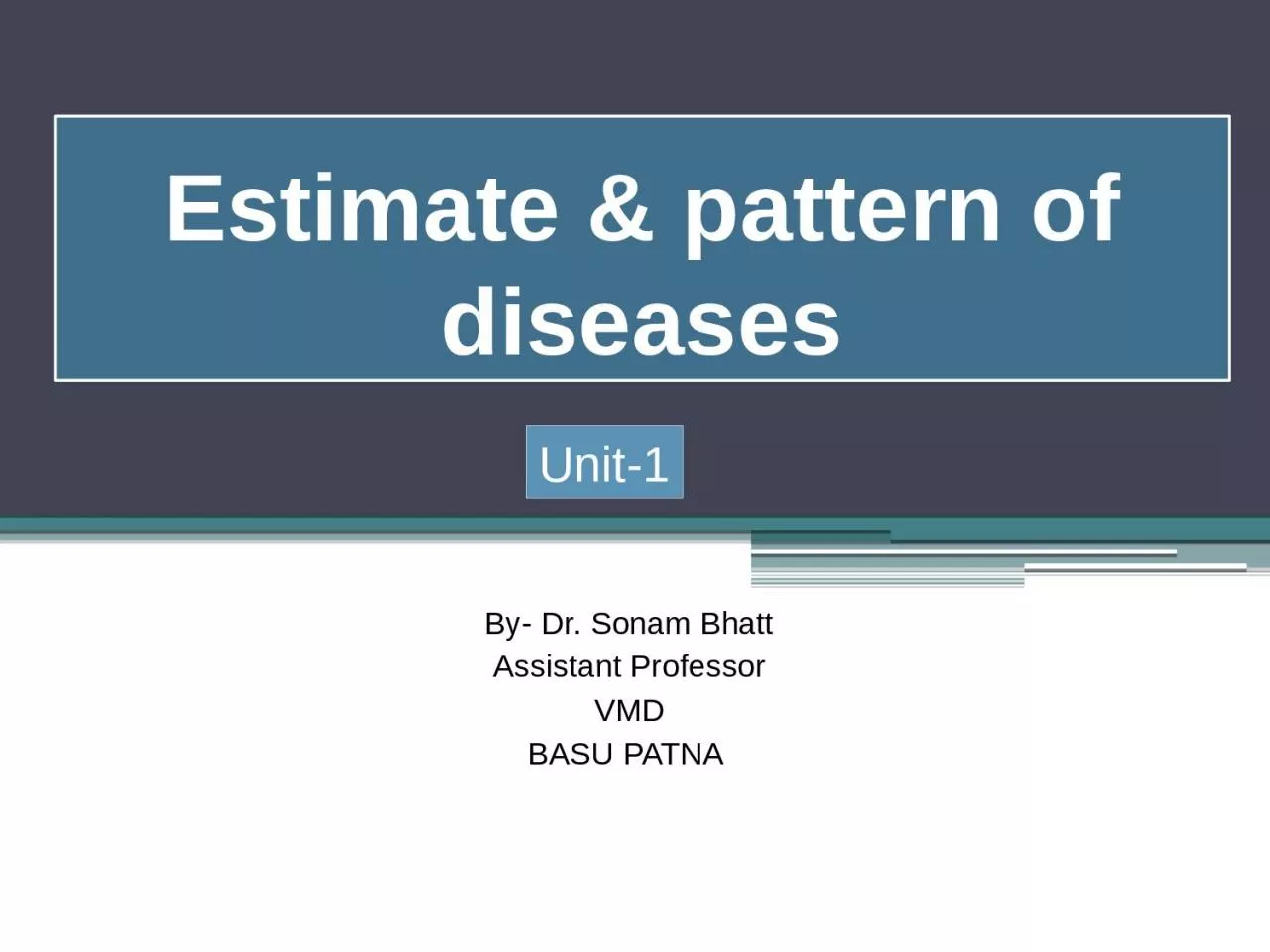

By Dr Sonam Bhatt Assistant Professor VMD BASU PATNA Unit1 Part of epidemiology It is the study and analysis of the distribution who when and where patterns amp determinants of ID: 1045066
Download Presentation The PPT/PDF document "Estimate & pattern of diseases" is the property of its rightful owner. Permission is granted to download and print the materials on this web site for personal, non-commercial use only, and to display it on your personal computer provided you do not modify the materials and that you retain all copyright notices contained in the materials. By downloading content from our website, you accept the terms of this agreement.
1. Estimate & pattern of diseasesBy- Dr. Sonam BhattAssistant ProfessorVMDBASU PATNA Unit-1
2. Part of epidemiology It is the study and analysis of the distribution (who, when, and where), patterns & determinants of health & disease conditions in defined populationsIt is concerned with the frequency and pattern of health events in a populationMeasures of disease frequency are used to describe how common an illness (or other health event) is with reference to the size of the population (the population at risk) & a measure of time
3. Pattern refers to the occurrence of health-related events by time, place, and animalWhen a disease occurrence described in terms of clustering in place, time, then the disease occurs in following patterns:SporadicEndemicEpidemicPandemic
4. Sporadic: When a disease appears only rarely or occasionally individuals of a given populationDisease occur irregularly or haphazardlyEndemic: Disease which are indigenous to or normally present among the population of an areaConstant presence of disease or infectious agent in a population within a given geographic area or population groupAlso refer to the usual or expected frequency of the disease
5. Epidemic: Disease is said to be an epidemic if its frequency in a given population during a given time interval is clearly in excess of its expected frequency. Pandemic: Epidemic that has spread over several countries or continents, usually affecting a large population Outbreak carries the same definition of epidemic, but is often used for a more limited geographic area
6. Estimate of disease Prevalence: It measures the number of cases (new + old cases) in a population who have the disease at a given point/period of time Point prevalence/ Period prevalenceP= No. of existing cases of disease(new + old) Total population at risk
7. Incidence: It is the number of new cases that occur in a known population over a specified period of time.Two essential components of an incidence value are:1 . the number of new cases2. the period of time over which the new cases occurIncidence rate: Measures the rapidity with which new cases of disease develop over timeI = No. of new cases of disease that occur population during a particular period of time Total population at risk during same time interval
8. Mortality rate M = number of deaths due to a disease that occur in a population during a particular period of timeTotal population Death rate: it is the total mortality rate for all diseasesCase fatality (CF) = Number of deaths Number of diseased animals
9.